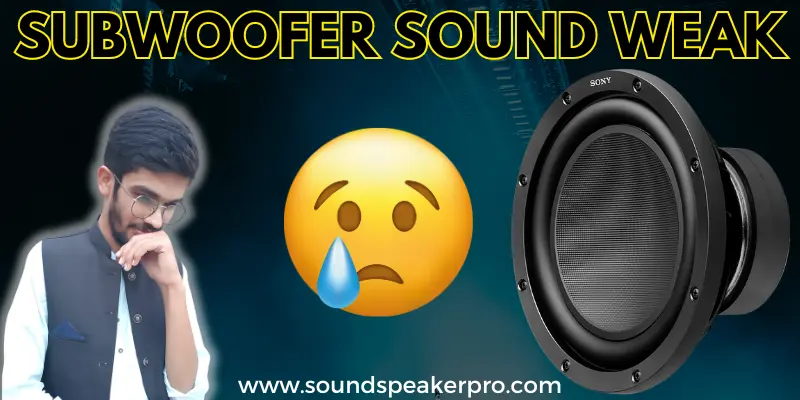
Are you ready to transform your car audio experience? Let’s dive into the world of car subwoofers, the unsung heroes that bring the deep, resonating bass to your favorite tunes.
In this article, we’ll explore everything you need to know about car subwoofers, focusing on how they enrich your music with that heart-thumping bass. Whether you’re a seasoned audiophile or new to car audio, understanding car subwoofers for deep bass is essential.
We’ll cover their basic functions, different types, key features to look for, installation tips, and how to fine-tune them for the deepest bass. So buckle up and prepare for a journey that will elevate your audio experience to new depths!
Understanding Car Subwoofers for Deep Bass
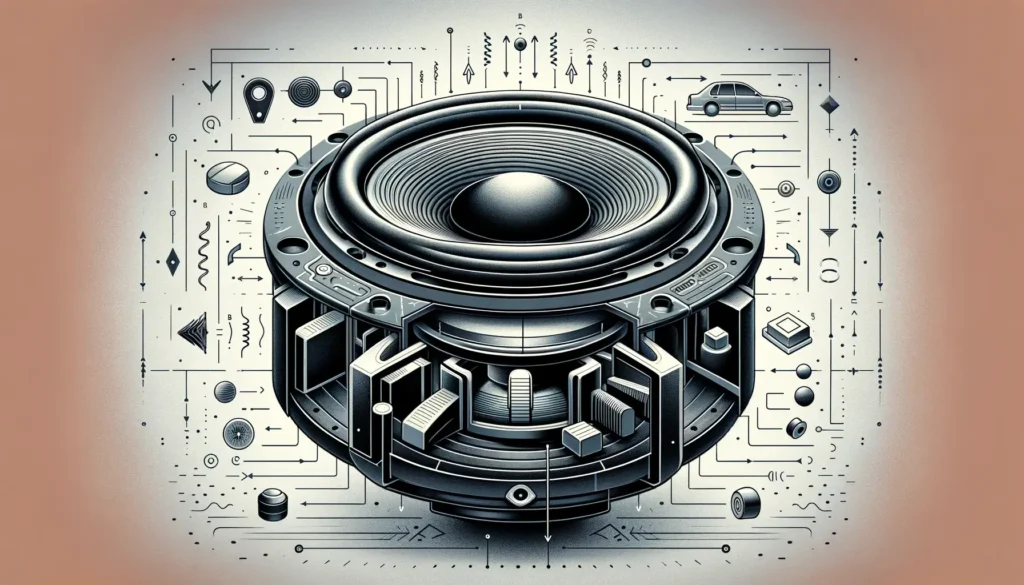
What exactly is a car subwoofer? Think of it as the heart of your car’s stereo system that pumps out those deep, rumbling bass sounds. Unlike regular speakers that play all sorts of notes, subwoofers are like specialists.
They focus on the low-pitched audio frequencies, known as bass. This is the kind of sound you feel as much as hear, like the thumping beat in your favorite dance track.
Now, how do car subwoofers differ from regular speakers? It’s all about specialization. Your standard car speakers are like all-round athletes – they’re good at playing a wide range of sounds, from high to low.
But subwoofers are like champion weightlifters, designed specifically to handle the heavy lifting of deep, powerful bass. They’re built to move more air and create those low-frequency waves, giving you the kind of sound that you can feel in your chest.
Want to dive deeper into getting the best bass experience in your car? Check out our guide on How to Choose a Car Subwoofer for Deep Bass. It’s packed with tips and tricks to help you pick the perfect subwoofer that matches your love for deep, resonating bass!
Types of Car Subwoofers for Deep Bass

When we talk about car subwoofers, there are different types to choose from, each with its unique features. Let’s break them down so you can find the one that’s just right for you.
Component vs. Enclosed Subwoofers:
Component Subwoofers:
These are just the speaker itself, without any enclosure. They’re perfect if you want to customize your car’s audio system. You get to choose the enclosure and other components to match. It’s like building your own audio puzzle!
Enclosed Subwoofers:
These come pre-mounted in a box designed specifically for them. They’re the go-to option if you want something easy and straightforward. Just plug them in, and you’re ready to feel that bass!
Passive vs. Powered Subwoofers:
Passive Subwoofers:
These need an external amplifier to power them. They’re like a guitar that needs an amp to rock out. You have more control over the sound, but it means buying and setting up an extra piece of equipment.
Powered Subwoofers:
These have a built-in amplifier. They’re super convenient and easier to install since everything you need is all in one package.
Size Variations:
The size of a subwoofer impacts the kind of bass you get. Larger subwoofers, like 12 or 15 inches, produce deeper and more powerful bass.
Smaller ones, like 8 or 10 inches, are great for tighter and more precise bass sounds. It’s like choosing between a big, booming drum and a smaller, sharper one.
Each type of subwoofer has its place, depending on what you’re looking for in your car’s sound system. And if you’re curious about how to keep your subwoofer in top shape for that deep, impactful bass, don’t miss our article on Car Subwoofer Maintenance for Optimal Deep Bass. It’s packed with helpful tips to ensure your subwoofer always sounds its best!
Key Features to Look for in a Car Subwoofer for Deep Bass
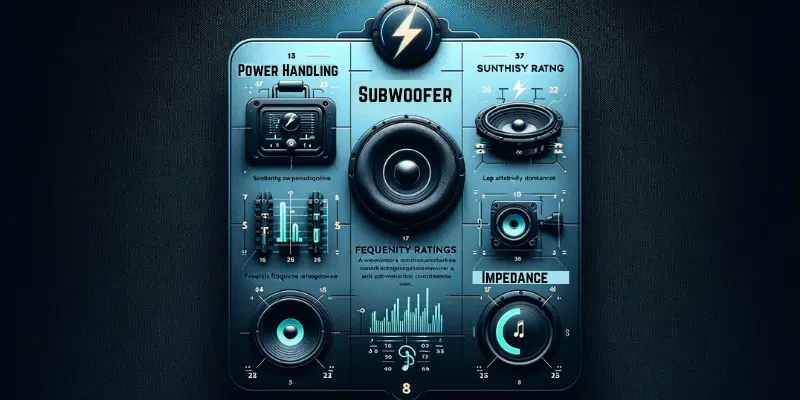
When you’re on the hunt for the perfect car subwoofer, there are a few key features you should keep an eye on. These features will help you find a subwoofer that brings out the best in your music, especially that deep, thrilling bass. Let’s walk through them:
Power Handling (RMS and Peak Power):
Think of RMS power as the subwoofer’s endurance level – how much power it can handle regularly without breaking a sweat. The higher the RMS, the more robust and durable the subwoofer.
Peak power is like the subwoofer’s sprinting ability – the maximum power it can handle in short bursts. This isn’t as crucial as RMS, but it’s still good to know.
Sensitivity Ratings:
Sensitivity is all about efficiency. It tells you how effectively the subwoofer converts power into sound. A higher sensitivity rating means less power is needed to produce the same amount of sound as a lower sensitivity subwoofer.
Frequency Range:
This is the range of sounds the subwoofer can produce. For deep bass, you’ll want a subwoofer that can go low – the lower the frequency, the deeper the bass. It’s like choosing a singer who can hit those really low notes.
Impedance:
Impedance is a bit technical, but it’s basically about how much resistance the subwoofer gives to the power from your amplifier. Most car subwoofers have an impedance of 2, 4, or 8 ohms. Matching the subwoofer’s impedance with your amplifier ensures the best performance and sound quality.
Remember, the perfect subwoofer depends on what you’re looking for in your car’s audio system. And if you’re wondering what are the best subwoofers for the perfect deep bass experience, be sure to check out our article on best car subwoofer for deep bass. It’s full of great advice to help you get the most out of your bass!
Subwoofer Installation Considerations
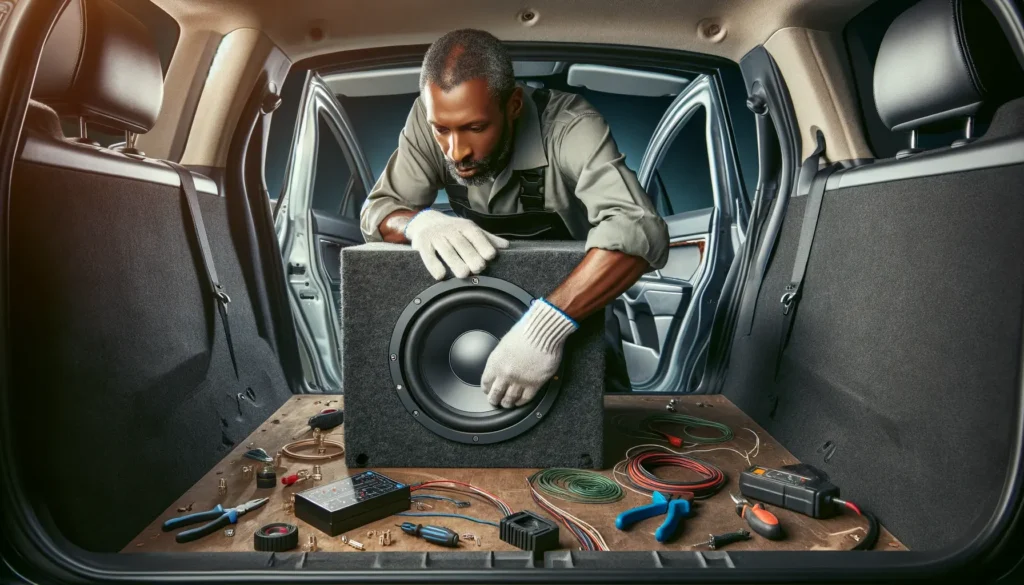
Getting the right car subwoofer is just the first step – installing it properly is key to unlocking its full potential. Let’s chat about why proper installation is crucial and the choices you have for getting it done.
Importance of Proper Installation:
Think of a subwoofer like a puzzle piece in your car’s audio system. If it’s not put in the right way, it won’t work as well as it could. Proper installation ensures that your subwoofer works efficiently, safely, and sounds amazing.
DIY vs. Professional Installation:
If you’re a hands-on kind of person, you might enjoy installing the subwoofer yourself. It can be a fun project, but remember, it requires some know-how about car audio systems and tools.
For those who prefer peace of mind, professional installation is the way to go. Experts can handle the tricky bits and make sure everything’s set up perfectly.
Common Installation Challenges:
Space can be a challenge – finding the right spot in your car where the subwoofer fits and works best.
Wiring is another hurdle. It needs to be done correctly to avoid any electrical issues and ensure your subwoofer gets the right amount of power.
Finally, tuning the subwoofer to blend well with your car’s existing sound system can be tricky but crucial for that perfect sound.
Remember, whether you choose DIY or a pro, what matters most is that your subwoofer is installed correctly for the best sound experience.
And speaking of sound, if you’re curious about how to make the most of your subwoofer for deep bass, be sure to check out our guide on Best Practices for Using Car Subwoofers for Deep Bass. It’s packed with tips to help you enjoy every beat to the fullest!
Tuning Your Subwoofer for Deep Bass
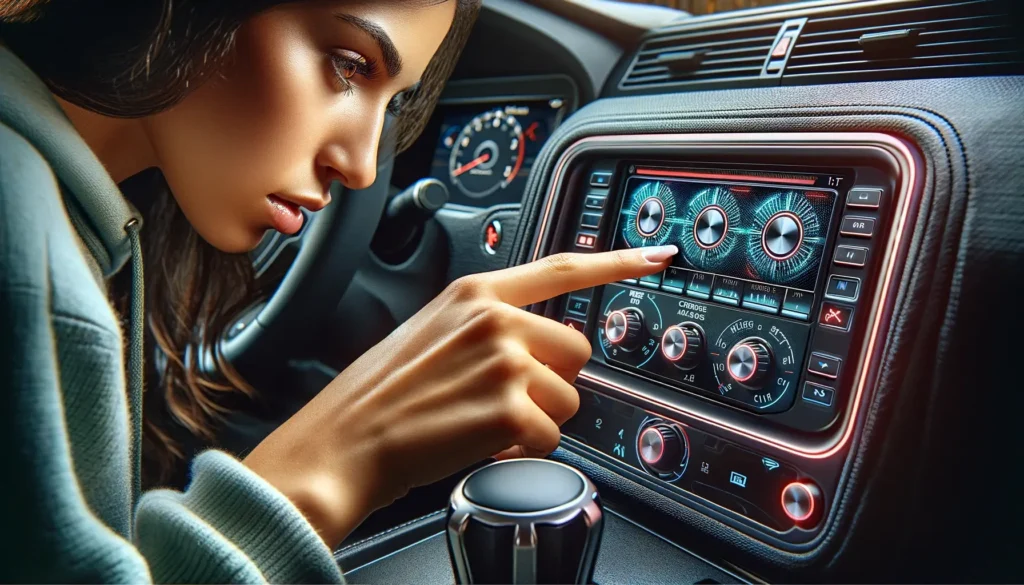
Getting the perfect deep bass from your car subwoofer is like seasoning a dish to taste just right. It’s all about tuning it properly. Here’s how you can fine-tune your subwoofer for that rich, deep bass that makes every drive more enjoyable.
Basic Tuning Steps and Adjustments:
- Start by setting the subwoofer’s volume. You want it to blend smoothly with your car’s speakers, not overpower them.
- Adjust the crossover. This controls the point where your subwoofer starts playing the bass frequencies. Set it so it picks up where your regular speakers leave off.
- Play with the phase control. This aligns the sound from your subwoofer with the rest of your speakers. It’s like making sure all your musicians are playing in time.
The Role of the Car’s Acoustics and Subwoofer Placement:
- Every car’s interior is different, and these differences affect how sound travels inside it. You might need to experiment with where you place your subwoofer to find the spot where the bass sounds the best.
- Placement is key. For example, if you place the subwoofer in the trunk, it might sound different than if it’s placed under a seat. It’s like finding the sweet spot in a room where the music sounds just right.
Remember, tuning your subwoofer is a bit of an art. Take your time, adjust slowly, and listen carefully. Soon, you’ll find that perfect setting that makes your favorite songs come alive with deep, resonating bass.
And for more detailed insights into getting that perfect bass sound, be sure to check out our article on Car Subwoofer Tuning for Deep Bass. It’s your go-to guide for making the most out of your car’s audio system!
FAQs
Which subwoofer is best for deep bass?
The best subwoofer for deep bass usually has a larger size, like 12 or 15 inches, and a high RMS power rating. Look for one with a good sensitivity rating and a low-frequency range to really feel those deep beats.
How do I get deep bass from my sub?
To get deep bass from your subwoofer, ensure it’s properly installed and tuned. Adjust the volume, crossover settings, and phase control. Also, play around with its placement in your car for the best sound.
Can subwoofers damage your car?
Subwoofers themselves won’t damage your car if installed and used correctly. However, very high volumes and vibrations over time could potentially affect loose parts or wiring, so it’s important to monitor and maintain them.
Can subwoofers be used as speakers?
Subwoofers are designed for low-frequency sounds and are best used in conjunction with regular speakers. They handle the bass, while regular speakers take care of the higher frequencies for a well-rounded sound experience.
Conclusion
We’ve journeyed through the exciting world of car subwoofers together, exploring everything you need for understanding car subwoofers for deep bass.
From the basics of what a subwoofer does, to the different types available, and how to pick the right features — we covered it all. Remember, the right subwoofer can totally transform your car’s audio experience, bringing that deep, powerful bass to life.
Whether it’s choosing the right type, ensuring proper installation, or fine-tuning for the best sound, each step is a leap towards an unbeatable audio experience in your car. So, why not take the plunge and upgrade your car audio system with a quality subwoofer?
Let every drive be an opportunity to enjoy your music like never before! And for more insights, don’t forget to check out our guide on Difference Between Deep Bass and Regular Car Subwoofers to make the most of your audio journey.


